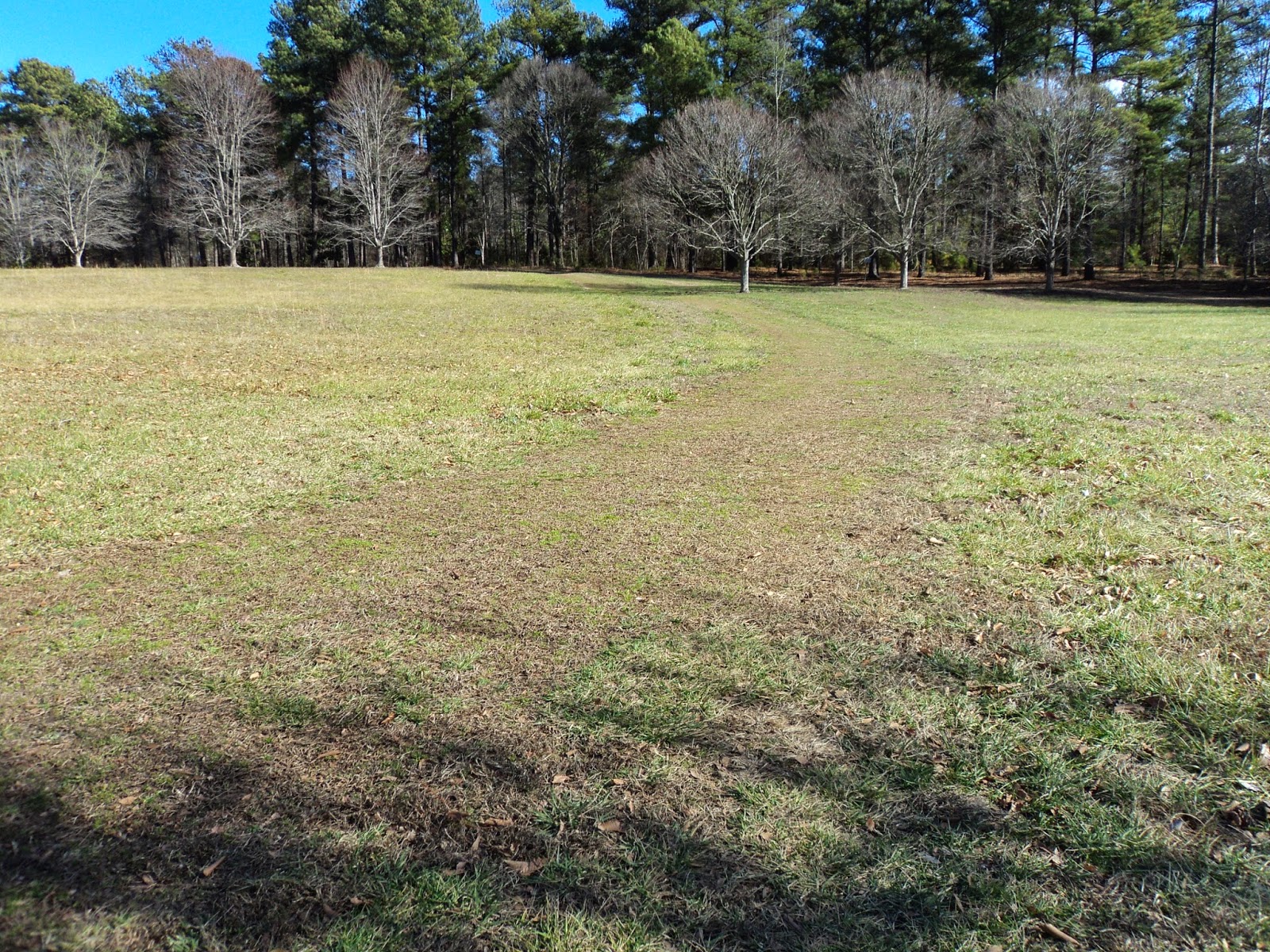Trails: (unnamed)
Hike Location: Milliken Arboretum
Geographic Location: Spartanburg , SC (34.98640, -81.95631)
Length: 1.7 miles
Difficulty: 1/10 (Easy)
Date Hiked: January 2015
Overview: A fairly flat hike through a grassy arboretum
dotted by trees and duck ponds.
Directions to the trailhead: Milliken Arboretum is
located on the campus of the Milliken Corporation in suburban Spartanburg . The arboretum is most easily accessed from
Exit 5B on I-85 Business in Spartanburg . Follow signs for visitors, and park on the
southeast side of the large blacktop visitor parking area, which is located immediately
southeast of the corporate campus’ main building.
The hike: Owned and operated by the Milliken
Corporation, a multinational chemical/textile company, Milliken Arboretum sits
on 600 acres adjacent to the company’s headquarters in Spartanburg . The nationally-recognized arboretum is the
brain-child of Roger Milliken, a former President of the Milliken Corporation
and grandson of the company’s founder.
The arboretum came into its own in 1989 when it acquired a large
collection of trees exotic to South Carolina
due to a partnership with a nursery in Oregon .
The
arboretum is open to the public, and the weekend is the best time to visit if
you want to avoid the crowd of Milliken employees who come to the headquarters
on weekdays. Also, the open grassy
nature of the arboretum makes this hike a hot and sunny one during the summer,
so I recommend a winter visit. I came
here on a seasonally warm Saturday in January and had a short but nice hike.
Milliken
Arboretum does contain a system of official trails, but there are no trail maps
at the parking area, and the trails often blend in with the large mown grass
areas. Thus, the trails can be hard to
follow. The hike described here roughly
follows the route of the longest trail, which traces the perimeter of the
arboretum. The open grassy areas make it
easy to create your own route if you see fit.
 |
| Arboretum Entrance |
Enter the
arboretum on a concrete path that departs the center of the southeast side of
the parking lot. The concrete quickly
runs out as you top a low ridge, and the arboretum’s grounds come into full
view. A small cluster of sycamore trees
can be found on this ridge. These trees
are distinctly out of place here, for in their natural environment sycamore
trees are mostly found in ravines along creeks.
A small
formal garden lies to your right here.
The garden contains some dedication plaques and a fountain that shoots
water 20 feet into the air. The fountain
is surrounded by a green curtain of southern magnolias that give the location
an air of seclusion even though busy I-585 lies only 100 yards beyond the
fountain.
 |
| Fountain in formal garden |
Back on the
grassy main trail, angle right to walk around the first two of several ponds
and begin the loop around the arboretum.
These ponds appear to have been dug out of the South
Carolina red clay by backhoe. As I walked along the edge of this pond, a
mixed group of white, mallard, and wood ducks apparently accustomed to people
feeding them swam over toward me. This
learned behavior is why most parks prohibit feeding of wild animals: a group of
ducks swimming toward you looking for a meal is one thing, but a bear running
toward you looking for a meal is quite another.
 |
| Ducks in pond |
The
mown-grass trail heads southeast parallel to the arboretum boundary with I-585
just yards to the right. A few groves of
loblolly pines briefly keep the highway out of sight, but the noise is
ever-present in this part of the arboretum.
Milliken Arboretum is a great place to bring a tree book and do some
tree identification as you walk, but you will need to bring a good tree guide:
the arboretum has over 70 kinds of trees, and most of them are not native to South
Carolina .
At 0.5
miles, the trail curves left to cross the earthen dam of another pond. A couple of mallard ducks were swimming in
this pond, but they made no movement in my direction. After crossing the dam, continue straight
where another trail angles left. The
outer-most trail climbs slightly as it approaches the arboretum’s southern
boundary, which is marked by tall loblolly pine trees bearing no trespassing
signs.
 |
| Approaching the southern boundary |
0.8 miles
into the hike, you reach the easternmost pond on this property. Turn right to walk around this pond. When I hiked this trail late one winter afternoon,
the pine trees reflected beautifully in the pond’s calm waters.
 |
| Pond reflection |
The trail
stays near the arboretum’s southern boundary until, at 1.2 miles, you reach a
paved road that is the SR 9 entrance to the Milliken facility. Another grassy area lies across the road, but
the official trail turns left to parallel the road as it heads back toward the
main parking area. Some ornamental trees
line the road, and a natural-grass meadow area lies to the left.
Just before
reaching the main parking lot, the trail curves left at 1.5 miles to pass the
last pond on the left. Very quickly you
close the loop. A right turn and short
walk over the low ridge will return you to the parking area to complete the
hike.









